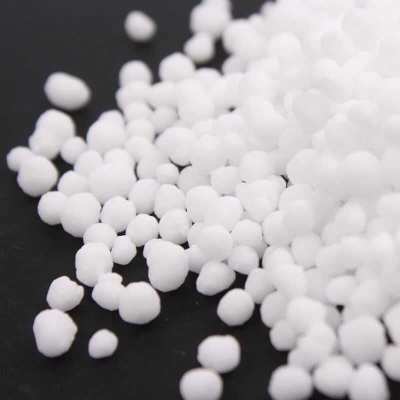-
Categories
-
Pharmaceutical Intermediates
-
Active Pharmaceutical Ingredients
-
Food Additives
- Industrial Coatings
- Agrochemicals
- Dyes and Pigments
- Surfactant
- Flavors and Fragrances
- Chemical Reagents
- Catalyst and Auxiliary
- Natural Products
- Inorganic Chemistry
-
Organic Chemistry
-
Biochemical Engineering
- Analytical Chemistry
- Cosmetic Ingredient
-
Pharmaceutical Intermediates
Promotion
ECHEMI Mall
Wholesale
Weekly Price
Exhibition
News
-
Trade Service
Researchers at the German Federal Institute for Materials Research and Testing have developed a new sustainable 3D printing material using termites and insect waste
.
Using the powdery wood particles and feces left by tiny insects after eating, scientists can concoct a unique circular economy raw material that can be 3D printed by binder jetting without any polymer additives
.
This kind of bio-based material produces parts with low strength but high dimensional accuracy, and may become an ideal material for creating environmentally friendly filament structures in the future
.
? △Researchers used termite lanugo to successfully 3D print a cubic structure with a dimensional accuracy of 200μm.
The photo is from the Plos One journal? From feces to raw materials? As the world continues to seek sustainable manufacturing solutions, 3D printing is often used in the industry It is considered to be more environmentally friendly than traditional production methods
.
? Natural raw materials are not only better for the earth, but also enable users to determine the product life cycle as early as possible in the production process, and adjust the output accordingly
.
This self-made material can also be formulated by recycling waste from the factory floor, making it cost-effective and the potential for sustainable development solutions
.
? In view of the fact that the binder spray can handle almost all powdered raw materials, it is often used as a means to test new formulations
.
However, it is still a challenge to refine these materials into powders with appropriate particle size
.
In order to solve this problem, German scientists discovered a new kind of particles, the source turned out to be: termites
.
△Binder jet 3D printing technology principle? The insect's digestive system converts non-uniform wood into a compact cellulose-lignin mixture, which is suitable for 3D printing without further processing
.
Although wood-based materials previously required polymer additives to print or use other binding phases, termite debris was not required, which makes it uniquely easy to process
.
? △The 3D printed cube structure of the scientists (pictured) has a low level of packing density.
The picture is from the Plos One journal? 3D printing with termite dung? In order to make wood materials, the scientists raised a small European house beetle (EHBs) ) And termite farms, feeding them for six months while collecting their feces
.
The results prove that the six-sided granular feces of all termites are almost the same in size and exhibit excellent fluidity, making them ideal materials for 3D printing
.
With enough raw materials, the team used the thermal curing station of a commercial 3D printer to cross-link them with ExOne binders to produce a set of cube specimens
.
Interestingly, by changing the system’s binder saturation parameters, researchers were able to determine the ratio of structures that provide adjustable porosity levels
.
?? In terms of layer thickness, the best repeatability result that can be achieved with termite feces is 800 microns, while EHB is proven to be more accurate at 100 microns
.
Similarly, the team’s dice-like structure is characterized by a dimensional accuracy of around 200μm, but it is also affected by supersaturation, in addition to low filler density
.
? The parts exhibit low mechanical strength.
Although scientists theoretically believe that penetration can increase robustness, they admit that the material is not suitable for printing "ready-to-use objects
.
" Researchers still believe that EHB frass has the potential as a raw material for creating filigree structures, and it needs to be reinforced by post-processing
.
.
Using the powdery wood particles and feces left by tiny insects after eating, scientists can concoct a unique circular economy raw material that can be 3D printed by binder jetting without any polymer additives
.
This kind of bio-based material produces parts with low strength but high dimensional accuracy, and may become an ideal material for creating environmentally friendly filament structures in the future
.
? △Researchers used termite lanugo to successfully 3D print a cubic structure with a dimensional accuracy of 200μm.
The photo is from the Plos One journal? From feces to raw materials? As the world continues to seek sustainable manufacturing solutions, 3D printing is often used in the industry It is considered to be more environmentally friendly than traditional production methods
.
? Natural raw materials are not only better for the earth, but also enable users to determine the product life cycle as early as possible in the production process, and adjust the output accordingly
.
This self-made material can also be formulated by recycling waste from the factory floor, making it cost-effective and the potential for sustainable development solutions
.
? In view of the fact that the binder spray can handle almost all powdered raw materials, it is often used as a means to test new formulations
.
However, it is still a challenge to refine these materials into powders with appropriate particle size
.
In order to solve this problem, German scientists discovered a new kind of particles, the source turned out to be: termites
.
△Binder jet 3D printing technology principle? The insect's digestive system converts non-uniform wood into a compact cellulose-lignin mixture, which is suitable for 3D printing without further processing
.
Although wood-based materials previously required polymer additives to print or use other binding phases, termite debris was not required, which makes it uniquely easy to process
.
? △The 3D printed cube structure of the scientists (pictured) has a low level of packing density.
The picture is from the Plos One journal? 3D printing with termite dung? In order to make wood materials, the scientists raised a small European house beetle (EHBs) ) And termite farms, feeding them for six months while collecting their feces
.
The results prove that the six-sided granular feces of all termites are almost the same in size and exhibit excellent fluidity, making them ideal materials for 3D printing
.
With enough raw materials, the team used the thermal curing station of a commercial 3D printer to cross-link them with ExOne binders to produce a set of cube specimens
.
Interestingly, by changing the system’s binder saturation parameters, researchers were able to determine the ratio of structures that provide adjustable porosity levels
.
?? In terms of layer thickness, the best repeatability result that can be achieved with termite feces is 800 microns, while EHB is proven to be more accurate at 100 microns
.
Similarly, the team’s dice-like structure is characterized by a dimensional accuracy of around 200μm, but it is also affected by supersaturation, in addition to low filler density
.
? The parts exhibit low mechanical strength.
Although scientists theoretically believe that penetration can increase robustness, they admit that the material is not suitable for printing "ready-to-use objects
.
" Researchers still believe that EHB frass has the potential as a raw material for creating filigree structures, and it needs to be reinforced by post-processing
.







